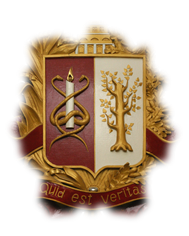Issue: 2020, Vol. 25, No. 3-4
PHYSICAL LOAD TOLERANCE DYNAMICS WITHIN SECOND REHABILITATIVE STAGE IN PATIENTS AFTER ACUTE CORONARY SYNDROME
- Keywords
- rehabilitation of cardiological patients, physical load tolerance.
- Abstarct
- Objective – to evaluate the dynamics of physical load tolerance in the second stage of cardiorehabilitation in patients of various age groups after acute coronary syndrome (ACS). Material and methods. 98 patients with ACS who were administered the second stage of rehabilitation were enrolled in the study. 36 patients aged 65 years and over composed the first group, 62 patients under 65 years composed the second group. Physical load tolerance was evaluated by six-minutes walking test (SWT), which was performed at the beginning of the observation period and after three-week rehabilitation period. Results and discussion. The average meaning of walking distance in SWT was trustworthy less in the first group than in the second one, both initially (correspondingly 385 [330; 408] m and 418 [385; 465] m, р < 0,001) and in three-week rehabilitation. The magnitude of walking distance increased in the first group 45 [15; 58] m, in the second group – 57 [18; 61] m (р > 0,05). Patients from both groups at the end of the rehabilitation course reached their age physical tolerance standard: walking distance in patients from the first group was amounting to 92 % in the average, in the second group – 85 % from the necessary magnitude (р > 0,05). Conclusions. Physical load tolerance dynamics (according to SWT results) did not differ in various age groups; it might be stipulated by the peculiarities of patients’ contingent who undergone ACS and were administered the rehabilitation in day-time hospital: relatively more severely ill young patients and more physically strong eldest patients.


 Vestnik_3-4_2020-32-36
Vestnik_3-4_2020-32-36